nubia Z60 Ultra review

A triple camera like no other
The nubia Z60 Ultra follows in the footsteps of a handful of Axon and nubia branded phones to feature a primary camera with a 35mm equivalent lens. A revered focal length in classic photography, 35mm is mostly overlooked on smartphones, where different pursuits have made the bulk of main cameras somewhere around the 24mm mark. Well, ZTE pushes on and continues to iterate on the subject, with this latest setup bringing yet more advanced hardware.

That said, the 35mm camera, in particular, is apparently unchanged from the one used on the Z50S Pro. That's not really a bad thing since it was already the best one of its (admittedly not widely-used) kind - all the other efforts at 35mm use smaller images. The one here is a 54MP Sony sensor with a somewhat unusual optical format and aspect ratio (1/1.49", 1.43:1) of which the nubia is using a 4:3 crop for photos for a total of 12.5MP after the 4-to-1 binning. The 35mm equivalent lens has 7 elements (one of them made of actual glass) and it's stabilized.

The Z60 Ultra's ultrawide isn't quite as ultrawide as most competitors, at 18mm equivalent, but it pairs nicely with the unusually long focal length of the main camera. You see, a wider ultrawide would have made for too great of a coverage gap between the two, which was the case on the Z50S Ultra and most Axons, with the notable exception of the 30 Ultra (which had an extra 26mm camera in addition to the 35mm one and the 13mm ultrawide - it was quite wild that one).
Anyway, ZTE has fitted a nicely large sensor here - at 1/1.55", it's the largest on an ultrawide camera in a phone with a 35mm main camera. Or at least as best as we can tell. The lens is plenty bright too, with an f/1.8 aperture, and it's also stabilized. So the less extreme focal length is not without its benefits.
The telephoto camera appears to be coming from the nubia Z50 Ultra, a phone we haven't seen in person. It's a notable improvement over the one fitted on the Z50S Pro and it's in many ways the same as the one that we saw on the Axon 40 Ultra - same sensor, minor differences with the lens specs. This one also features OIS, but what it doesn't have is close focusing - we've gotten used to nice closeups from recent flagship teles, and you won't be getting that here.

- Wide (main):50MP Sony IMX800 (54MP, 1/1.49", 1.0µm - 2.0µm), f/1.6, 35mm, multi-directional PDAF, Laser AF, OIS; 4K@120fps, 8K@30fps
- Ultrawide: 50MP OmniVision OV50E40 (1/1.55", 1.0µm-2.0µm), f/1.8, 18mm, multi-directional PDAF, OIS; 4K@120fps
- Telephoto: 64MP OmniVision OV64B40 (1/2.0", 0.7µm-1.4µm), f/3.3, 85mm, multi-directional PDAF, OIS; 4K@120fps
- Front camera: 12MP OmniVision OV12D2Q (1/2.43", 1.4µm-2.8µm, 16:9), f/2.0, 24mm, fixed focus; FullHD@30fps
Daylight photo quality
Main camera (35mm)
Photos from the Z60 Ultra's main camera look great. They have minimal noise and excellent detail and random textures are rendered in a reasonably likable fashion. The auto-white balance is dependable, and we're getting a mature approach to saturation.
One thing struck us as less than ideal, and it's the transition from in-focus to out-of-focus areas that has a hazy quality to it, and you'll be seeing that a lot with nearby subjects. It's not really a dealbreaker, but it's something to keep in mind if you're shooting around the minimum focus distance. More distant backgrounds do melt away nicely, though.
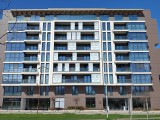






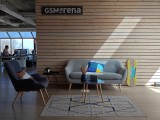
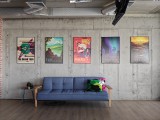
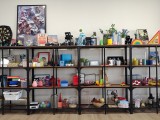
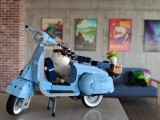
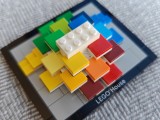

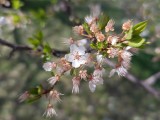


Daylight samples, main camera (35mm)
There's another image profile called Gorgeous (as opposed to the default Natural), which will get you a moderate kick in contrast and saturation. The photos are certainly more expressive that way, though it's perhaps a little too much.




Daylight samples, main camera (35mm), Gorgeous
Here's a handful of people shots to show you how the nubia deals with skin tones.




Daylight samples, main camera (35mm), Photo mode
You'll probably note that the Portrait mode doesn't have quite as wide dynamic range, so you may wish to stick to Photo mode in backlit situations.




Daylight samples, main camera (35mm), Portrait mode
You'll probably want to avoid the 50mm zoom level in Portrait mode for another reason - the viewfinder gives you a wider preview than the resulting images. How did we find out?




Daylight samples, main camera (50mm), Portrait mode
The full-res mode won't get you any detail benefits - the images are essentially upscaled versions of the 12.5MP ones.
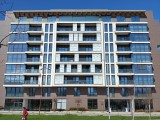







Daylight samples, main camera (35mm), 50MP
Telephoto camera (85mm)
The telephoto camera captures good images too, though they're not exactly flawless. They are undoubtedly sharp, noise-free and detailed in bright outdoor light - that much is clear. Colors also have a pleasing level of pop.
However, there's a higher-than-usual amount of fringing around contrasting edges - that fifth sample has never had so much purple in it. Additionally, indoor shots take a bit of a hit in detail, and are also rather unenthusiastic in their color presentation.







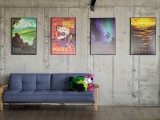
Daylight samples, telephoto camera (85mm)
The 85mm camera isn't too great for indoor photos of people either, and it would occasionally struggle with shots in bright light too. We got images with what looks like motion blur at shutter speeds that should be able to avoid it. The dimmer indoor sample doesn't have that - instead, it's just softer from cranking up the ISO and the resulting noise processing.




Daylight samples, telephoto camera (85mm), Photo mode
A quick look at the Portrait mode samples in the same settings at 85mm reveals them to be sharper across the board. So perhaps your best bet for shooting people at 85mm is using Portrait mode and dialing down the bokeh effect. You have to make sure you do that at the time of shooting, because there doesn't appear to be a way to adjust it later in the gallery.




Daylight samples, telephoto camera (85mm), Portrait mode
As we saw on the main camera, the full-res mode on the telephoto doesn't appear to be extracting additional detail from the scene.







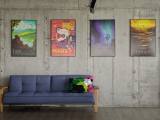
Daylight samples, telephoto camera (85mm), 64MP
Ultrawide camera (18mm)
The ultrawide camera's photos are excellent. The conservative focal length has no doubt helped make a lens that can resolve better than more extreme designs and we're getting tons of fine detail. Of course, the flipside is that you won't be able to exaggerate perspectives quite as much as with a 13 or 14mm lens, but it's not necessarily a net-negative trade-off.
Dynamic range is excellent here, and so too is the color presentation.
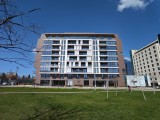







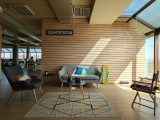
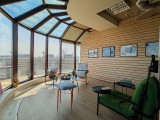
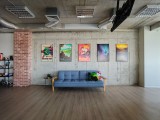

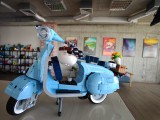
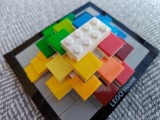
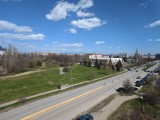

Daylight samples, ultrawide camera (18mm)
Once again, don't expect extra detail from the 50MP mode.
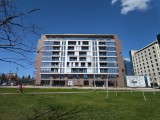





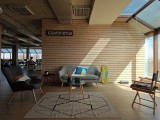
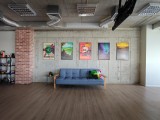
Daylight samples, ultrawide camera (18mm), 50MP
Selfies
Selfies from the Z60 Ultra are borderline unusable. There's an overall softness to these photos and colors are only a vague representation of real life. That said, we get that the underdisplay camera's life isn't made easy by the display pixels getting in the way, so we aren't expecting miracles from it and neither should you.
Low-light photo quality
Main camera (35mm)
Thenubia does a respectable job with low-light photography. Its main camera exposes well and maintains a wide dynamic range, so you get good highlight preservation and reasonably well-developed shadows. The auto-white balance doesn't make blunders, and we experienced no weird color casts. Detail is generally very good, too.









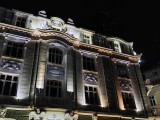



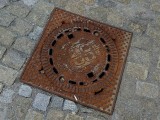

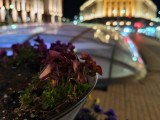
Low-light samples, main camera (35mm)
Telephoto camera (85mm)
The telephoto camera doesn't disappoint either. Detail isn't pin-sharp, but it's not bad either. Tonal development is great, with well-preserved highlights and shadows that are bright enough without being overdone. Color reproduction is also hard to fault both in terms of white balance and saturation.








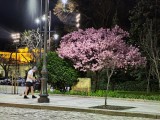



Low-light samples, telephoto camera (85mm)
Ultrawide camera (18mm)
The ultrawide's results are somewhat more exciting since the large sensor and bright lens combo brings nicer than usual photos. Detail is great for an ultrawide camera - with the asterisk that it's not as wide as most. Dynamic range is excellent though there can be some slightly weird halos around point light sources. Colors also remain expressive, without white balancing missteps.








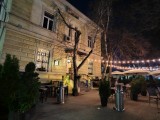



Low-light samples, ultrawide camera (18mm)
Video recording
The nubia Z60 Ultra can record video up to 4K120 with its three rear cameras - not just the main one as is the case on most other current offerings. 4K60 and 4K30 are, of course, also available, but there's no 24fps option. The main camera on the back can also do 8K30.
Electronic stabilization is available (and can be switched off) on all three cameras up to 4K60, but you're on your own in 4K120 and 8K30.
The default codec is still h.264 for all modes, including 4K120 and 8K30. Video bit rates vary and we saw values up to 63Mbps for 4K30 and 105Mbps for 4K60 while 4K120 and 8K30 were a little over 120Mbps. Audio is recorded in stereo at 96kbps.
Video quality out of the Z60 Ultra is generally good. All cameras capture good detail in 4K30, and maintain about the same quality in 4K120, which is great. Somewhat annoyingly, the main camera's footage is a bit sharper in 4K60, while the other two units are about the same in all three frame rates. The main camera's colors run a little cooler than those on the other two cameras (though that does improve in 4K60), but they all look nice in isolation. Dynamic range is also alright - not the widest, but not bad either.
Stabilization is excellent on the nubia. All three rear cameras stay planted if you just point the phone in one direction, and pans are typically smooth (with ever so slightly abrupt transitions on the main camera). The main and the ultrawide camera also proficiently iron out the walking shake.
Low-light video performance is quite alright. The main camera and the ultrawide have a somewhat harsh rendition of highlights, though we'd still say they expose correctly for the conditions and have reasonable dynamic range. Detail is good on both, with the ultrawide in particular being nicer than the bulk of ultrawides (though, again, this one isn't as wide as most). The telephoto is more in the so-so category, which is where we find most telephotos.
Video sample playlist
You can check out the playlist below, which includes multiple video samples.
Reader comments
- Anonymous
- 29 Nov 2024
- bJv
dude stop smoking weeds - with all the upgrades you're asking nubia would have asked maybe double the price and then you would have cried they are crazy to ask so much. And complain for that price you could get a samsung or iphone,etc..
- Foxycoxy
- 26 Oct 2024
- 0nX
Great phone , main cameras are ahead of the game, also gaming and multitasking no issues then only thing I would change is the selfie camera , yes it's nice being hidden underneath the display but it's not great, you have to be in good ligh...
- Cappuccino
- 14 Oct 2024
- XK8
Without blinking





